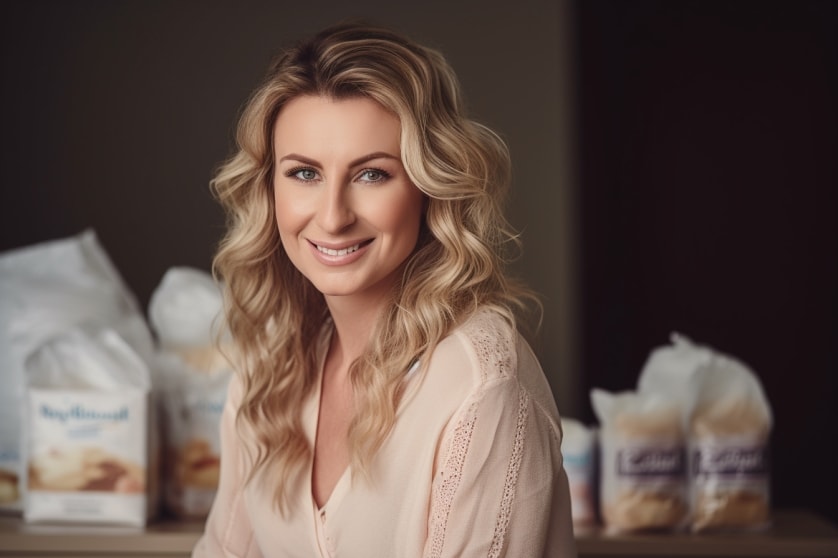Table of Contents
ToggleThe Ultimate Guide to Saving Money with a Baby
Having a baby is a joyful experience, but it can also be an expensive one. From diapers to formula to clothes and toys, the costs of raising a baby can quickly add up. But don’t worry – there are plenty of ways to save money and still provide your little one with everything they need. In this ultimate guide to saving money with a baby, we’ll share our top tips and tricks for cutting costs without sacrificing quality.
First, let’s talk about the numbers. According to a report by the U.S. Department of Agriculture, the average cost of raising a child to age 18 is a whopping $233,610. That’s a staggering amount of money, and it’s no wonder that many new parents feel overwhelmed by the costs associated with having a baby.
But here’s the thing – you don’t have to spend that much money to provide your child with a happy, healthy upbringing. By being strategic with your spending and taking advantage of money-saving tips and tricks, you can significantly reduce the amount of money you spend on baby-related expenses.
In this guide, we’ll cover a wide range of topics, from buying in bulk to DIY baby food to secondhand shopping. We’ll also provide practical advice on how to create a budget, track your expenses, and make smart financial decisions as a new parent.
But before we dive into the details, let’s take a moment to acknowledge something important – saving money with a baby can be hard. It’s not always easy to resist the temptation to buy the latest and greatest baby gear, or to resist the pressure to keep up with other parents who seem to have it all figured out. And that’s okay.
At the end of the day, what matters most is that you’re doing your best to provide for your child while also taking care of yourself and your family’s financial well-being. With that in mind, let’s get started on our journey to saving money with a baby!

Creating a Budget
One of the most important steps you can take to save money with a baby is to create a budget. A budget is a financial plan that helps you keep track of your income and expenses. By creating a budget, you’ll be able to see exactly where your money is going and make informed decisions about how to spend it.
Creating a budget might sound daunting, but it doesn’t have to be. Here are some tips to get you started:
- Track your expenses: Before you can create a budget, you need to know how much money you’re currently spending. Start by tracking your expenses for a few weeks or a month. Write down everything you spend money on, from groceries to diapers to baby gear. Seeing your expenses laid out in front of you can be eye-opening and help you identify areas where you might be overspending.
- Calculate your income: Next, determine how much money you have coming in each month. This might include your salary, any freelance or side income, and any government benefits you receive.
- Set financial goals: Once you know how much you’re spending and earning, it’s time to set some financial goals. Do you want to save for your child’s college education? Build up an emergency fund? Pay off debt? Having specific financial goals in mind can help you make more strategic decisions about how to allocate your money.
- Identify areas where you can cut back: Now that you have a sense of your income and expenses, it’s time to start looking for ways to cut back. Are there any areas where you can reduce your spending, such as eating out less or canceling a subscription service? Remember, every dollar you save counts.
- Create a budget: Finally, it’s time to create your budget. Start by listing your monthly income at the top of the page, and then list your expenses below. Be sure to include all of your fixed expenses (like rent or mortgage payments) as well as your variable expenses (like groceries and entertainment). Make sure your expenses don’t exceed your income, and adjust your spending as needed to make sure you stay within your budget.
Creating a budget might not be the most exciting thing in the world, but it can be incredibly empowering. When you have a clear financial plan in place, you’ll feel more in control of your money and more confident in your ability to provide for your family.
Of course, creating a budget is only the first step – you’ll also need to stick to it! One way to stay on track is to use a budgeting app or tool, which can help you track your expenses and alert you when you’re getting close to your spending limit. You might also consider setting up automatic savings transfers or using cash envelopes to keep your spending in check.
Remember, creating a budget is just one tool in your money-saving arsenal. By combining budgeting with other strategies like buying secondhand, DIY-ing, and using coupons, you’ll be well on your way to providing for your baby while also saving money for the future.

Buy in Bulk
Buying in bulk is one of the most effective ways to save money when you have a baby. Not only does it save you money, but it also saves you time and reduces your environmental footprint. Here are some tips for buying in bulk:
- Make a list: Before you head to the store, make a list of the items you use most frequently. This might include diapers, wipes, baby food, formula, and household items like toilet paper and cleaning supplies. Having a list will help you stay focused and avoid buying items you don’t really need.
- Compare prices: Not all bulk items are created equal. Before you buy, compare prices to make sure you’re getting the best deal. Check out different retailers, both online and in-store, and don’t forget to factor in shipping costs if you’re buying online.
- Consider joining a warehouse club: Warehouse clubs like Costco and Sam’s Club are a great place to buy in bulk. They offer deep discounts on items you use regularly, and they often carry a wide variety of organic and eco-friendly products as well. Just be sure to do the math to make sure the membership fee is worth it for your family.
- Stock up during sales: Even if you don’t have a membership to a warehouse club, you can still save money by stocking up during sales. Keep an eye out for sales at your local grocery store or online, and buy in bulk when prices are low. Just make sure you have enough storage space to store your bulk purchases.
- Don’t forget about expiration dates: While buying in bulk can save you money, it’s important to pay attention to expiration dates. Make sure you’re buying items that you’ll use before they expire, and store them properly to ensure they stay fresh.
- Share with friends: Finally, consider sharing your bulk purchases with friends or family members. If you buy a large package of diapers or wipes, for example, you might be able to split the cost and share the items with a friend who has a baby. Not only does this save you money, but it also helps build community and reduces waste.
Buying in bulk can be a great way to save money with a baby, but it’s important to approach it strategically. By making a list, comparing prices, considering warehouse clubs, stocking up during sales, paying attention to expiration dates, and sharing with friends, you’ll be well on your way to saving money while also reducing your environmental impact.
And remember, buying in bulk doesn’t mean you have to sacrifice quality. Many bulk items are available in organic, eco-friendly, or natural options, so you can feel good about your purchases and the impact they have on your family and the planet.

Cloth Diapers vs. Disposable Diapers
One of the biggest decisions new parents make when it comes to diapering their baby is whether to use cloth diapers or disposable diapers. Both options have their pros and cons, and it ultimately comes down to personal preference.
The Benefits of Cloth Diapers
- Cost Savings: Cloth diapers can save you a significant amount of money over the long term. While the upfront cost of cloth diapers can be high, you can save thousands of dollars over the course of your baby’s diaper-wearing years.
- Better for the Environment: Cloth diapers are reusable, which means you won’t be contributing to the landfill with every diaper change. They also don’t contain the same chemicals as disposable diapers, which can be harmful to the environment.
- Less Diaper Rash: Cloth diapers are made from natural materials, which can be gentler on your baby’s skin and may reduce the risk of diaper rash.
The Benefits of Disposable Diapers
- Convenience: Disposable diapers are easy to use and dispose of. You don’t have to worry about washing and drying them, which can save you time and energy.
- Less Mess: Disposable diapers are designed to absorb moisture quickly and efficiently, which can mean fewer leaks and less mess to clean up.
- Portability: Disposable diapers are lightweight and compact, which makes them easy to take with you on the go.
Which Option Is Right for You?
When it comes down to it, the decision between cloth and disposable diapers is a personal one. Consider your lifestyle, budget, and environmental concerns before making your choice.
If you’re concerned about cost savings and the environment, cloth diapers may be the way to go. If convenience and portability are more important to you, disposable diapers may be the better option.
Keep in mind that you don’t have to choose one option exclusively. Many parents choose to use a combination of cloth and disposable diapers, depending on the situation.
Ultimately, the most important thing is to choose a diapering option that works for you and your baby, and that keeps your little one clean, dry, and comfortable.

Breastfeeding vs. Formula Feeding
Deciding whether to breastfeed or formula feed your baby is a personal decision and there are pros and cons to each option. Here are some factors to consider:
- Cost: Breastfeeding is free while formula feeding can be expensive.
- Convenience: Breastfeeding can be more convenient since you don’t need to prepare bottles and formula on the go. However, formula feeding allows for others to help with feeding and may be more convenient for working moms who can’t always breastfeed.
- Bonding: Breastfeeding can help foster a close bond between mother and baby, while formula feeding can still provide an opportunity for bonding through snuggles and eye contact.
- Nutrition: Breast milk is the most nutritious option for babies, as it contains all the nutrients they need and provides antibodies to help fight off infections. Formula can still provide adequate nutrition, but it may not offer the same immune-boosting benefits.
- Comfort: Breastfeeding can be uncomfortable or even painful for some mothers, while formula feeding can be a more comfortable option.
If you choose to breastfeed, there are ways to save money, such as using a breast pump to store milk for when you’re away from your baby or finding a breastfeeding support group for guidance and resources. If you choose to formula feed, consider buying generic or store-brand formula to save money.
Ultimately, the decision to breastfeed or formula feed is a personal one and should be based on what works best for you and your baby. Don’t let societal pressure or guilt sway your decision. The most important thing is that your baby is fed and loved.

DIY Baby Food
Feeding your baby can be quite expensive, especially if you opt for store-bought baby food. But did you know that you can make your own baby food at home? Not only is it cost-effective, but it also allows you to have complete control over what goes into your baby’s food. In this section, we’ll explore the benefits of making your own baby food and provide you with some tips on how to get started.
Benefits of Making Your Own Baby Food
Making your own baby food has numerous benefits:
- Cost-effective: Homemade baby food is much cheaper than store-bought baby food. You can buy fresh produce in bulk and prepare large batches of food at once, which can last for weeks.
- Healthy: When you make your own baby food, you know exactly what ingredients are going into it. You can ensure that your baby is getting all the nutrients they need without any added preservatives or artificial flavors.
- Control over flavors and textures: You can experiment with different flavors and textures to see what your baby likes. You can also adjust the consistency of the food to match your baby’s developmental stage.
- Sustainable: Making your own baby food can help reduce waste by using reusable containers and minimizing packaging waste.
Getting Started with DIY Baby Food
Here are some tips to help you get started with making your own baby food:
- Invest in the right equipment: You’ll need a blender or food processor to puree the food, as well as storage containers to store the food.
- Choose the right produce: When selecting produce, opt for organic options when possible. Avoid produce that is overripe or has bruises or spots.
- Cook the food: Depending on the produce, you may need to cook it before pureeing. Steaming is a popular cooking method for baby food, as it helps retain nutrients.
- Puree the food: Use a blender or food processor to puree the food to a consistency that is appropriate for your baby’s age and developmental stage.
- Store the food: Store the food in airtight containers in the fridge or freezer. Baby food can be stored in the fridge for up to three days and in the freezer for up to three months.
With a little bit of planning and preparation, making your own baby food can be a fun and rewarding experience. Not only will it save you money, but it will also ensure that your baby is getting all the nutrients they need to grow and thrive.
Conclusion
Congratulations! You’ve made it to the end of this ultimate guide to saving money with a baby. We’ve covered a lot of ground, from creating a budget to DIY baby food, and I hope you’ve found the tips and tricks helpful.
Remember, the key to saving money with a baby is to be mindful of your spending, plan ahead, and get creative. It’s okay to splurge on the things that matter most to you, but finding ways to cut costs in other areas can really add up over time.
Being a parent is one of the most rewarding experiences in life, but it can also be one of the most expensive. With these strategies, you can keep more money in your pocket while still providing the best possible care for your little one.
Thank you for reading, and I wish you all the best on your parenting journey!
Want to take your knowledge to the next level? Check out these must-read articles:
- Preparing for Your Child’s Future: How to Start Saving Early
- Balancing Work and Parenting: A Guide for New Parents
Organize your baby’s wardrobe with our baby clothes closet organizer products! Our organizers are designed specifically for baby clothes. Get your baby’s clothes neat and tidy with our selection of organizers – shop now!
Hey there, are you craving a fresh perspective? Look no further! Feast your eyes on the awesome video below:
Beyond her professional achievements, Jessica is also a successful mother to a large and thriving family. Her firsthand experience in balancing financial responsibilities while raising multiple children gives her a unique perspective that resonates with her audience. As a mother, Jessica understands the financial challenges and pressures faced by families, and she brings a compassionate and relatable approach to her blogging. Through her blog, Jessica not only shares her financial expertise but also provides invaluable insights on how to foster financial well-being while building a strong and harmonious family foundation. Whether it's budgeting, saving for college, or teaching children about money, Jessica's relatable stories and practical tips make her an indispensable guide for individuals striving to achieve financial stability while nurturing a fulfilling family life.
- The New Mom’s Guide to Efficient Online Shopping - July 5, 2025
- First Birthday Philosophy: Meaningful Celebrations Without Excess - July 1, 2025
- Financial Planning for New Parents: Securing Your Family’s Future - June 16, 2025



